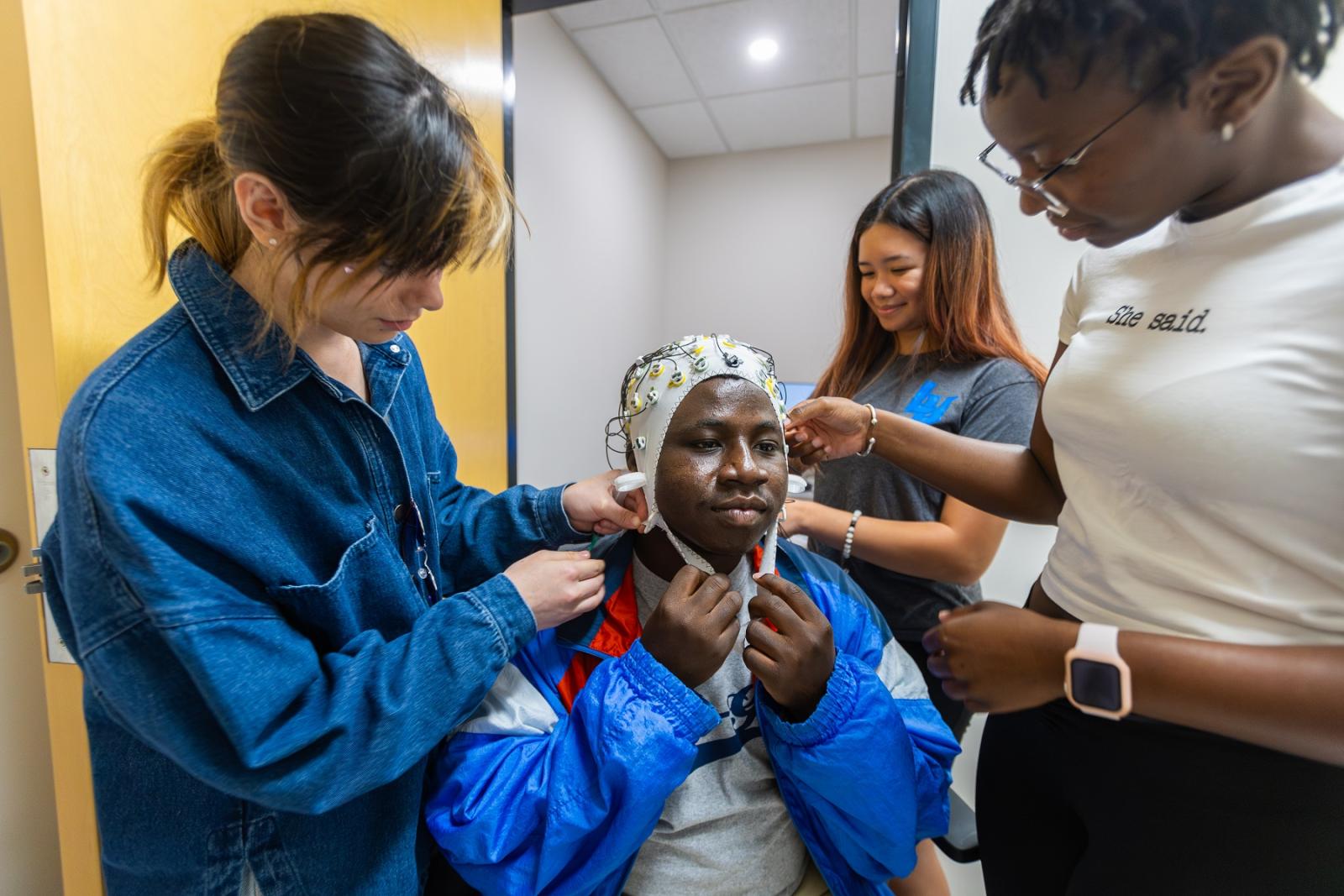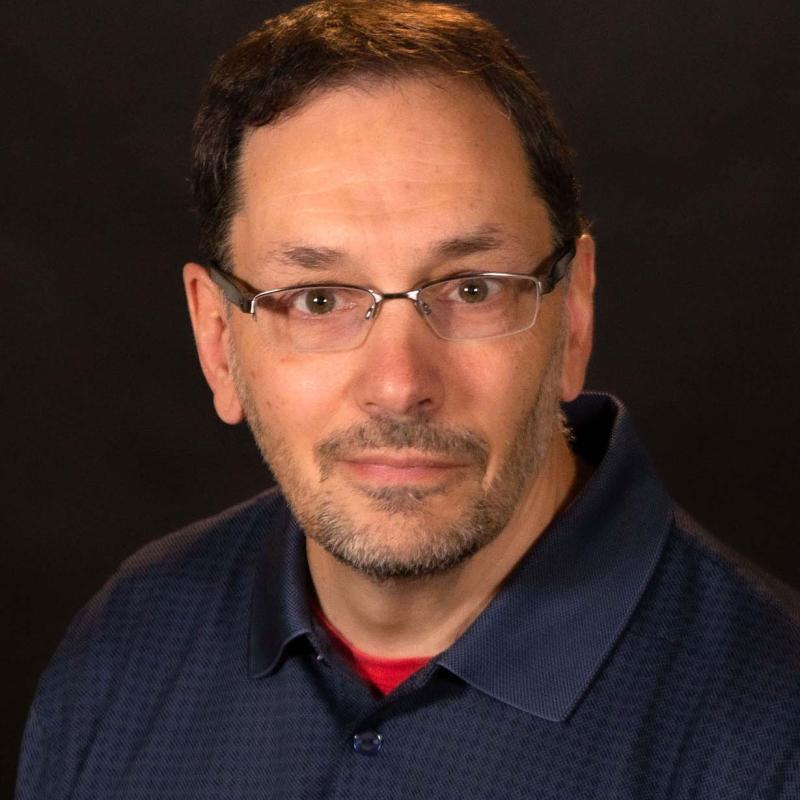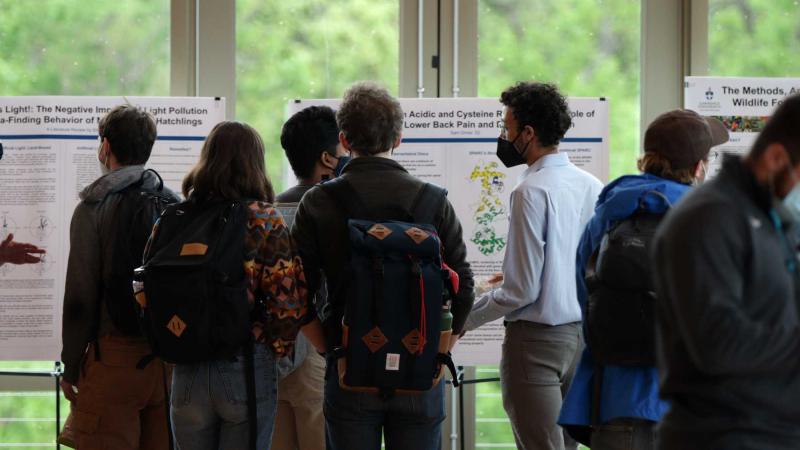Four Lawrence University neuroscience majors are immersed in cognitive research aimed at understanding how people in an information-rich world interact with visual stimuli and how that affects attention and memory.
Den Boakye, a junior from Ghana, Vivian Khan, a senior from Waukon, Iowa, Fanta Jatta, a senior from Madison, Wisconsin, and Khayla Santiago, a senior from Morton Grove, Illinois, are working in the lab of Professor Chunyue Teng on research that aims to shed light on how the brain juggles the new information we see with information we remember.
“We're particularly interested in visual short-term memory—visual working memory—the mental sketchpad where we briefly hold visual details,” said Teng, the Dennis and Charlot Singleton Assistant Professor of Cognitive Neuroscience.
Imagine you're driving in a new city; you glance at your GPS, remember the next turn, then focus back on the road. Or you are grocery shopping with a mental list, deciding what to grab based on which aisle you’re in. These scenarios highlight how we constantly switch between what we see and what we remember.
“Interestingly, our brain uses the same areas for both seeing and remembering,” Teng said. “So, how does it manage both at once? That's what we're trying to figure out.”
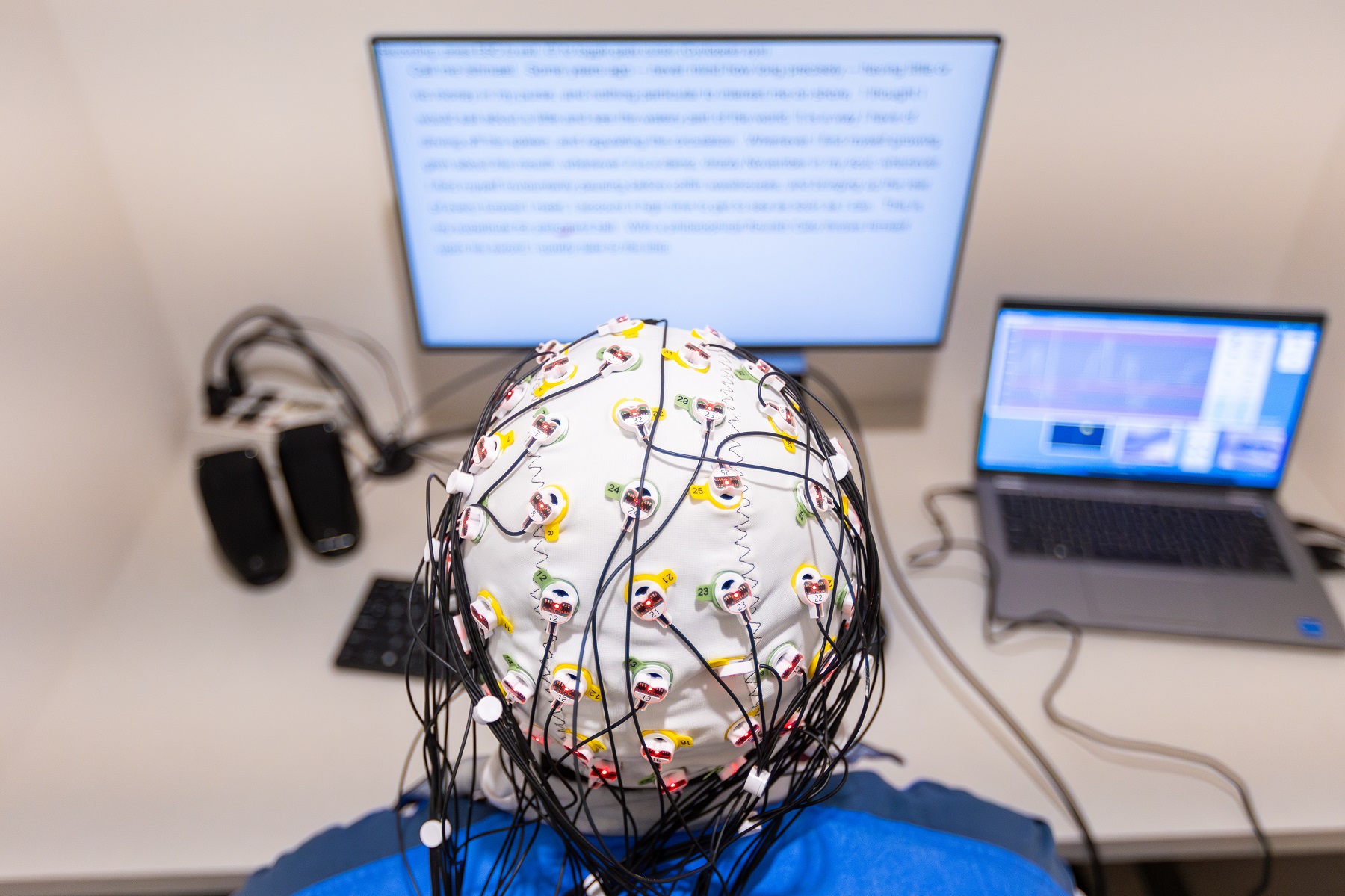
EEG technology is used to gather data on brain activity in the VMC Lab. (Photo by Danny Damiani)
The research has included student presentations at the Society for Neuroscience Conference in Chicago, the Midwest Regional Neuroscience Conference in Green Bay, and the Wisconsin Science Education and Research (WiSER) Conference in Milwaukee. In addition, Santiago presented findings at the Vision Sciences Society meeting in St. Petersburg, Florida, and the group presented their research at the Lawrence University Research Fellows (LURF) symposium on campus.
Boakye, Khan, Jatta, and Santiago are gaining deep knowledge while getting a taste for what graduate or medical school might look like. They helped build the infrastructure of Teng’s Vision, Memory, and Cognition (VMC) Lab in Briggs Hall, including Jatta using Lawrence’s Makerspace to create a 3-D model chin rest used in experiments. They worked with electroencephalogram (EEG) technology—utilizing a special cap with built-in sensors—to measure brain activity. They learned to process, analyze, and interpret data about how our brains support cognition, vision, and memory, which they then shared at the various conferences and symposiums.
Santiago, who is interviewing for graduate schools to study neuroscience, called her experience at the Vision Sciences Society eye-opening.
“I was able to interact with vision neuroscientists from all over the world,” she said. “I had people from as far as the Netherlands and Japan to as close as Chicago and New York stop by my poster and listen to my research and findings. On the other days, I was able to listen to talks from graduate students across the world and interact with other professors during networking events.”
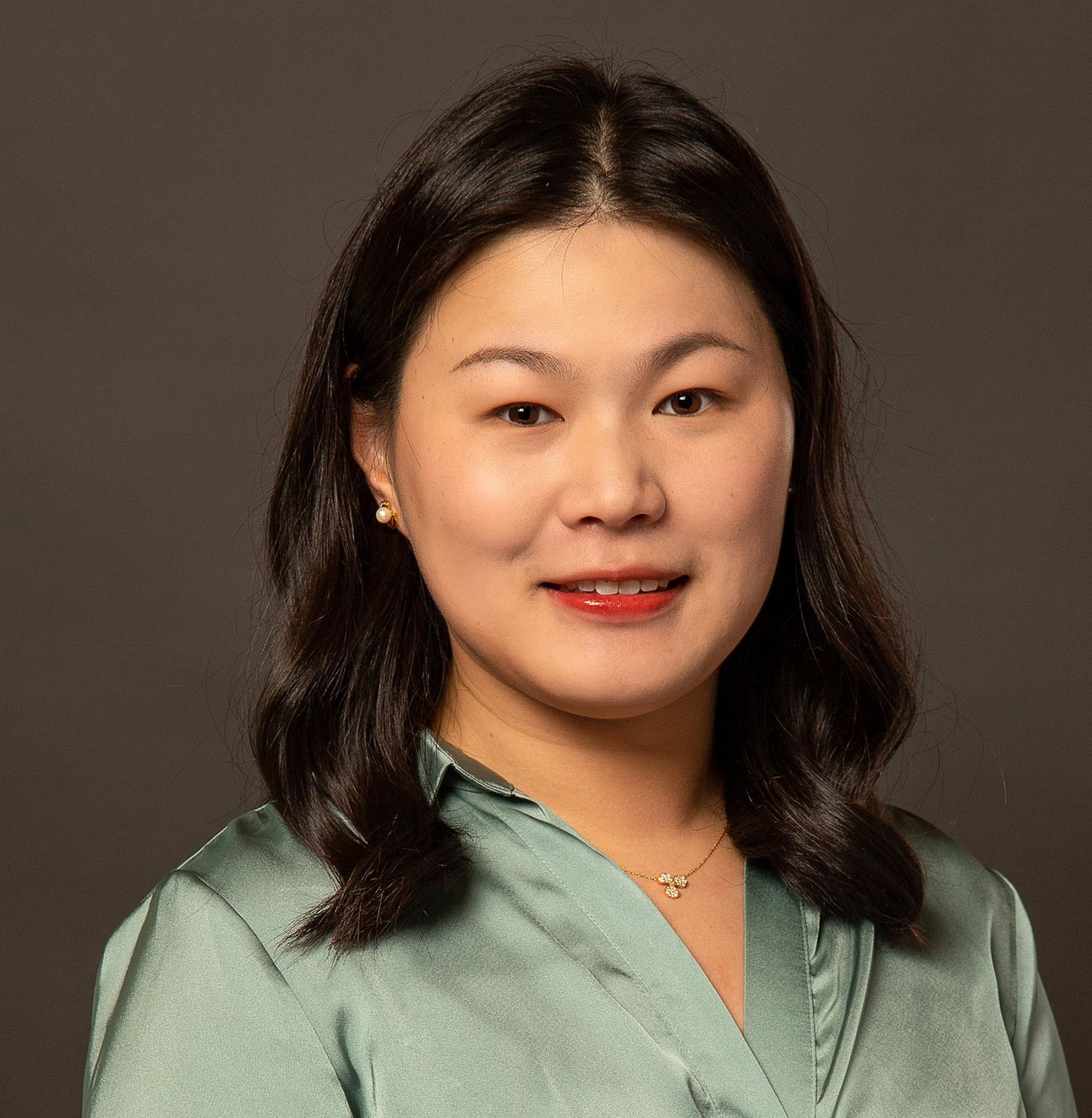
Chunyue Teng
The Society for Neuroscience Conference, meanwhile, drew 22,000 people. It is considered the world’s largest neuroscience conference for scientists and physicians devoted to understanding the brain and nervous system. Santiago presented a poster that was co-authored by Jatta.
“I saw a lot of interesting ways we could bring more awareness about brain sciences to our communities,” Santiago said.
The research being done in Teng’s VMC lab covers a wide swath of brain activity. To do this research at the undergraduate level is a huge win for these students. In one study, they are testing whether the human brain rapidly switches attention between what we see and what we remember, like a mental juggling act. In another study, they are exploring how we adapt our memories to different tasks. Just like you might reorganize your mental grocery list based on the store layout, the researchers believe the brain can flexibly use visual memories depending on what we're doing.
"By understanding these processes better, we hope to gain insights that could help improve everything from education techniques to computer interfaces, and maybe even help people with attention or memory difficulties,” Teng said.
Teng came to Lawrence in 2023 after four years as a postdoctoral researcher at the University of Wisconsin-Madison. She holds a Ph.D. in cognitive neuroscience from George Washington University and a Bachelor of Science (psychology) from Fudan University in China. Lawrence’s endowed professorship in cognitive neuroscience was established in 2017 by a gift from Dennis and Charlot Nelson ’67 Singleton. It allowed for the addition of a tenure-line faculty position and established a neuroscience program that offers a major and a minor in neuroscience, along with research opportunities, while deepening interdisciplinary connections to biology, psychology, philosophy, linguistics, anthropology, and computer science.
Explore the ever-growing world of behavioral studies, psychology, and more as you dive deep into the world of the brain.
Santiago said the VMC Lab research has been a focal point in several of her graduate school interviews.
“All of them stated how they thought I would be a great fit for their lab during my graduate studies because of the research I have done here with Professor Teng,” she said.
Santiago initially came to Lawrence because its pre-health programming is ideal preparation for medical school. She fell in love with neuroscience research along the way.
“It’s amazing we have a cognitive neuroscience professor now because it has always been my passion to understand the brain and how our brain allows us to do such complex things,” Santiago said. “Because of the resources I have by being part of her lab, I now can follow my passions beyond Lawrence, and I am eternally grateful.”
Boakye said the research experience will be key as he charts a path either through medical school or graduate school. It builds on work he did last year in the lab of Elizabeth De Stasio, the Raymond H. Herzog Professor of Science and professor of biology, and the ongoing development of competencies in coding and experimental design in the field of cognitive neuroscience. He joined Khan in presenting a poster at the 2024 WiSER Conference at the Medical College of Wisconsin in October and gave a talk at the Midwest Regional Neuroscience Conference.
“I am eager to continue learning about the brain and its connections to all the other organs in our body,” Boakye said.
For Jatta, the research—and the presentations to peers and others—has solidified her desire to work in the neuroscience field. She is eyeing graduate studies or medical school, with a focus on understanding neural mechanisms to inform patient care. She’s had interest in pursuing such studies since losing her grandfather to a brain tumor, which she said motivated her to better understand the brain. Lawrence has proven to be the ideal place to launch those studies.
“Lawrence attracted me not only because of its strong neuroscience program and emphasis on research but also because of the positive experiences shared by my older brother, who graduated in 2021,” Jatta said. “Hearing firsthand about Lawrence’s supportive community, small class sizes, and dedicated faculty from him strongly influenced my decision to study here, and it has proven to be an ideal environment for my academic and personal growth.”
